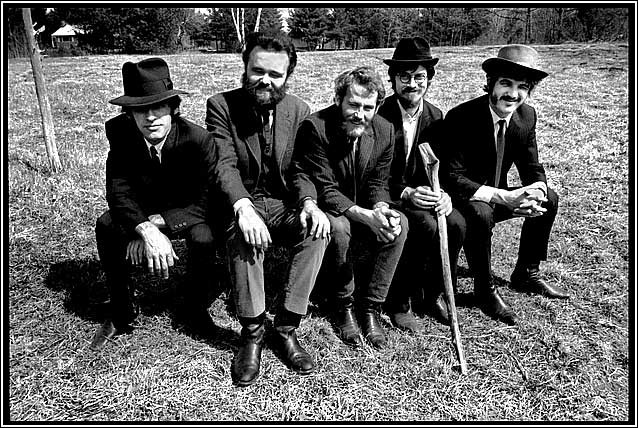I first encountered John Fahey’s music around the same time I was immersed in the works of Richard Brautigan. These two American originals became linked in my mind, a connection that persists to this day. The album that sparked this fascination was The Transfiguration of Blind Joe Death, originally released in 1965 with its distinctive gothic cover on Fahey’s own Takoma label, and later reissued by Transatlantic Records.
Perhaps it was the name, resonating with a mythical, bygone America, that drew a parallel in my mind to Brautigan’s evocative book titles like Trout Fishing in America, In Watermelon Sugar, and A Confederate General from Big Sur. Both Fahey and Brautigan were myth-makers and tricksters, playfully subverting form and tradition. They both seemed to hail from a different era. Brautigan, on the Picador cover of Trout Fishing In America, looked like he could easily have fit in with The Band at Big Pink. In many ways, they were artists captivated by what Greil Marcus famously termed “the old weird America,” traces of which lingered in folk tales, ballads, and the rawest forms of folk, blues, and country music. Yet, they were also modernists, mischievously and irreverently forging new forms and languages in their respective art.
It wasn’t until later that I understood The Transfiguration of Blind Joe Death was intentionally misleading, as were the album’s extravagant liner notes. Fahey was indulging in his own brand of humor at the expense of blues and folk music aficionados, a group he ironically belonged to. However, the music itself was profound: intricate, captivating, multi-layered, and resonant. It has remained with me ever since, becoming a constant presence over the years.
This music is primarily solo and acoustic, played on a steel-stringed guitar. I recall my younger self being hesitant about buying an entire album of instrumental acoustic guitar music. But the more I listened to The Transfiguration of Blind Joe Death in the background of a now-vanished Camden Town second-hand record shop, as I sifted through the racks, the more it captivated me.
Reading on a mobile? Click here to watch video
In Fahey’s hands, a single song could evoke echoes of the diverse older musical styles he was drawn to – traditional folk ballads, blues, bluegrass, gospel, and spirituals – while simultaneously sounding utterly new and unique. When he interpreted traditional songs like “John Henry” or even “Bicycle Built for Two,” he infused them with the restless creativity of his playing. On “Old Southern Medley,” from The Transfiguration of Blind Joe Death, he even name-checks the musicians he’s channeling: the iconic American songwriter Stephen Foster, Fahey’s beloved Charley Patton, and Daniel Decatur Emmett, a self-taught musician and songwriter who founded the first blackface minstrel troupe in 1843.
Fahey’s musical tastes leaned towards the archaic and overlooked, the peculiar and the primitive. His guitar playing seemed to conjure the spirits of long-gone blues and ragtime pioneers. Perhaps more than anyone except for Bob Dylan during The Basement Tapes era, he stands as a crucial link between the nearly forgotten folk musics of an older America and contemporary musicians broadly categorized as Americana.
In a recent documentary about Fahey, In Search of Blind Joe Death: The Saga of John Fahey, musicologist Rob Bowman observes, “It’s hard to imagine what contemporary music would be like if people like John Fahey had not been obsessively fascinated with roots American music from the 1920s and 30s. That’s the secret of a whole swathe of modern rock’n’roll. It was his sense of collage, soundscape and dissonance that influenced people like [Pete] Townshend, Thurston Moore and Beck.”
Pete Townshend, in fact, offers high praise in the documentary, stating, “Could I go so far as to say he is the innovator? I think yes… he is definitely worthy of the term iconoclast. He is in his own bubble.” This “bubble” encapsulates not only Fahey’s guitar playing but also his singular and eccentric life. Born in Takoma Park, Maryland, on February 28, 1939, he bought his first guitar from Sears & Roebuck for $17 at the age of 14. His first musical revelation came when he heard Blind Willie Johnson’s “Praise God I’m Satisfied” on a 78rpm record at a friend’s house.
“I started to feel nauseated so I made him take it off, but it kept going through my head so I had to hear it again,” he recounted to music writer Edwin Pouncey in a revealing 1998 interview for The Wire magazine. “When he played it the second time I started to cry, it was suddenly very beautiful. It was some kind of hysterical conversion experience where in fact I had liked that kind of music all the time, but didn’t want to. So, I allowed myself to like it.”
Reading on a mobile? Click here to watch video
A few years later, Fahey experienced an even more transformative encounter with the music of Charley Patton upon discovering a copy of “High Water Everywhere.” His subsequent obsession with Patton was so profound that he made the blues musician the subject of his master’s thesis. This obsession fueled his desire to emulate the music he loved on guitar, a talent that astounded his friends and led to the recording of a 78 of blues tunes on the Fonotone label under the pseudonym Blind Thomas. And so, fittingly, the remarkable journey of John Fahey’s music began in a proto-postmodern fashion, with an elaborate prank.
This Blind Thomas recording served as a kind of accidental blueprint for The Transfiguration of Blind Joe Death and much of his subsequent work. “He was always making up the myth of John Fahey,” his ex-wife Melody explains in the documentary. “At some point, he decided he wasn’t a black blues singer, but he had fun pretending he was at one time.” A quick look at Fahey’s discography reveals a pattern of mischievousness aimed, consciously or not, at collectors and completists. His actual debut album, 1959’s Blind Joe Death, is not to be confused with The Transfiguration of Blind Joe Death (1965). Adding to the confusion, The Legend of Blind Joe Death, released on CD in 1996, is an expanded version of his debut.
Further complicating matters, the original sleeve notes for Blind Joe Death attributed one side of the music to the fictional blues guitarist Blind Joe Death and the other side to Fahey. In his liner notes for the 1996 reissue, Glen Jones writes: “This was the first of many subterfuges perpetrated by Fahey, whose future liner notes (and those of aide de camp, Ed Denson), would be full of lies, in-jokes, obscure references, and absurdities, often written in a tone that mocked the texts of prominent blues scholars and folklorists of the day. Considering the fact that Fahey was then as well known as his invented blues counterpart, one wonders how many people outside Fahey’s immediate circle of friends ‘got’ the joke (or cared), or why he bothered to perpetrate such a deception in the first place. Though the deeper answers to that question must lie in the recesses of Fahey’s noggin, the fact is that John has always done exactly what he wants and has sought to amuse himself first and foremost.”
Beneath the prankster persona lay a deep artistic seriousness. Fahey was also a perfectionist, re-recording some of his albums, including the seminal Death Chants, Breakdowns and Military Waltzes, initially released in 1964 and then again in an “improved” version in 1967. (Both versions are available on the 1999 CD deluxe reissue, and surprisingly, the earlier version often feels more timeless and mysterious.) On YouTube, you can hear the stately “In Christ There Is No East Or West” in its original form from Blind Joe Death and in a richer live recording from 1968. You can even watch an older, wiser Fahey play it and then attempt to break it down for us mere mortals.
Reading on a mobile? Click here to watch video
For those new to John Fahey Guitar, The Transfiguration of Blind Joe Death or Deathchants, Breakdowns and Military Waltzes are excellent starting points for exploring his vast and diverse output. Various compilations also provide a good overview of his style. (Thankfully, YouTube is brimming with Fahey performances, both early and late, inspired and more indulgent.)
After all these years, the precise nature of Fahey’s mesmerizing guitar playing remains somewhat of a mystery to me, even after explanations from accomplished guitarists and Fahey devotees. For me, Fahey’s obvious dexterity and seemingly effortless technical brilliance are only part of his greatness. His compositions often work like a spell, achieved through his distinctive tunings, his use of repetition, dissonance, and layered melodies, and his constant introduction of subtle variations within a single pattern. Simply put, his playing draws me in every time, transporting me to another place – a realm akin to a waking dream. (John Martyn, in his most drifting and hazy moments, achieves a similar effect in a different way.)
“I think of myself as a classical guitar player,” John Fahey once said, somewhat regretfully. “But I’m classified as a folk musician.” To me, he transcends both categories. His guitar playing is simply too unique to be generically labeled. On “Fare Forward Voyagers,” for example, he integrates elements of Eastern raga into his already intricate musical structures. The result, especially in the extended piece that occupies an entire side of the vinyl record, is even more meditative and mesmerizing.
Sadly, Fahey’s life, for a period, mirrored the unfortunate trajectories of many of the overlooked blues musicians he admired. When Pouncey interviewed Fahey in 1998, the musician was living in “a chaotic motel room” in Woodburn, Oregon. He had weathered a long period of decline in the 1980s, marked by alcoholism and a diabetes diagnosis. He had also contracted the Epstein-Barr virus, leaving him too fatigued to perform. Times became so dire that he was forced to pawn his guitars and scour flea markets and second-hand shops for rare classical records to sell to collectors.
Weary and stoic, Fahey seemed dismissive of his most celebrated music, revealing a deep well of sadness and despair beneath his often serene compositions. “I was creating for myself an imaginary, beautiful world and pretending that I lived there, but I didn’t feel beautiful,” he confessed to Pouncey. “I was mad but I wasn’t aware of it. I was also very sad, afraid and lonely.”
However, by this time, his fortunes were turning around. The 1994 release of a double retrospective, The Return of the Repressed, on Rhino Records, had reignited interest in his music and introduced him to a younger audience, many of whom had heard his name mentioned by artists like Jim O’Rourke, Thurston Moore, and Beck. There was a certain poetic justice in this resurgence, given that Fahey was an early independent artist, founding Takoma Records in the late 1950s and releasing his own recordings and those of overlooked musicians he admired, from steel-string guitar virtuoso Leo Kottke to singular talents like Robbie Basho and veteran blues singers like Bukka White.
Fahey was a pioneer in many respects, but it is his guitar music that truly endures. Some of his output, like the two albums he recorded for Reprise in the 1970s, Of Rivers and Religion and After the Ball, which feature a Dixieland orchestra, are definitely an acquired taste. Similarly, his later works from the 1990s on Revenant, where he experimented with effects-laden electric guitar and explored a more internal sonic landscape, can be challenging for even devoted listeners. Yet, Fahey was always impulsive and unpredictable. He created an inspired Christmas album, The New Possibility (1969), which became a surprise hit, and the often spellbinding Fare Forward Voyager (1973) was a set of extended solo guitar meditations inspired by T.S. Eliot’s The Four Quartets and dedicated to a Hindu guru, Swami Satchidananda. Later, Fahey admitted his brief foray into Asian mysticism was prompted by his infatuation with the swami’s secretary.
John Fahey remained an explorer and an iconoclast until the end, even publishing several volumes of semi-autobiographical writings, including the wonderfully titled How Bluegrass Music Destroyed My Life. His final album, Red Cross, was released posthumously in 2003, following his death from complications during heart bypass surgery two years prior, at the age of 61. It’s a mixed collection, but contains some drifting, spectral electric pieces that are haunting and elegiac. Since then, Dust to Digital has released Your Past Comes Back to Haunt You: the Fonotone Years 1958-1965, an illuminating and brilliantly annotated five-CD box set of his early work, further testament to his unique genius.
A serious prankster whose brilliance led him down some dark paths, John Fahey created wordless music on a six-string guitar that was so full of ideas and innovation, so steady and assured, that it seemed to encompass the entire history of popular music while also hinting at something beyond, a place both real and mythical, timeless and deeply resonant. He once described his gift as a blend of “divine inspiration and an open subconscious.” It was, and remains, transportive: a vast and wondrous world conjured through six steel strings and an overflowing imagination.
John Fahey’s album cover for “The Transfiguration of Blind Joe Death”, showcasing his unique artistic vision.
Richard Brautigan’s “Trout Fishing in America” book cover, illustrating the literary connection to Fahey’s music.
 The Band at Big Pink
The Band at Big Pink
Blind Willie Johnson album cover, a key influence on John Fahey’s early musical development.
Charley Patton album art, highlighting Patton’s crucial role in shaping Fahey’s guitar style and musical direction.
John Fahey playing his guitar, capturing his intense and innovative fingerstyle technique.


